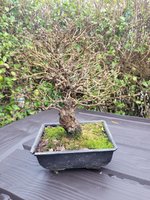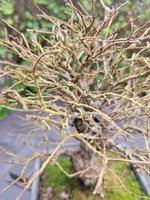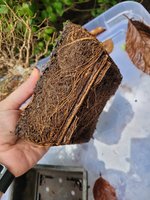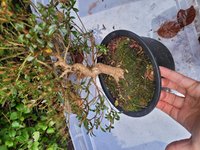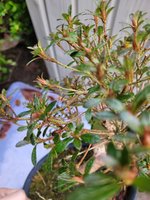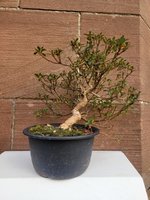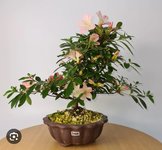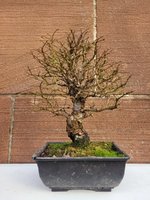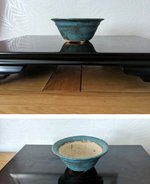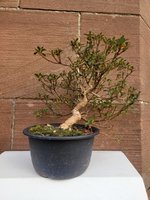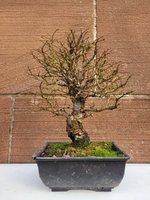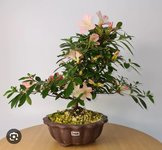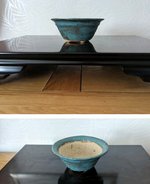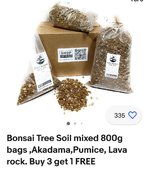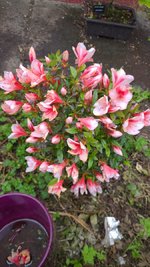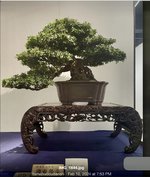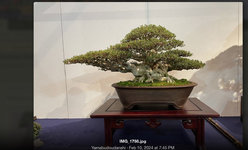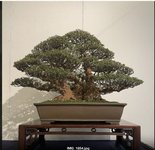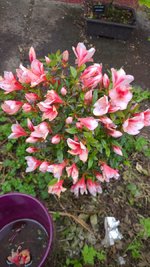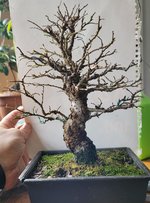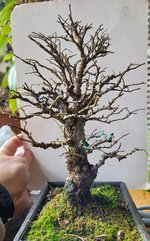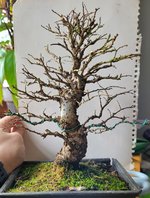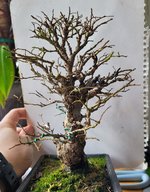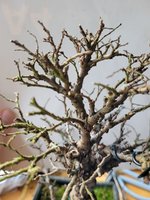Choppychan
Yamadori
Hi,
I am thinking of repotting my corkbark elm and my sazuki azelea.
The soil they are in is not the best and they look pretty tight in their pot. I could not take the azelea out of its pot for the pic. I have kaizen no 2 soil, would that be suitable?
The elm is in a 10 cm by 15cm (4 inch by 6 inch approx). Thinking of going for 7 inch oval pot.
The azelea is in a 18cm pot (7inch). I am thinking of going for an 8 inch white/off white glazed pot for the azalea (flowers are white and pink).
Can you please advise on size and shape for both? Would I need to wait for the repotting?
Also, can I remove the moss by spraying 100% white vinegar on them while covering the soil?
I am thinking of repotting my corkbark elm and my sazuki azelea.
The soil they are in is not the best and they look pretty tight in their pot. I could not take the azelea out of its pot for the pic. I have kaizen no 2 soil, would that be suitable?
The elm is in a 10 cm by 15cm (4 inch by 6 inch approx). Thinking of going for 7 inch oval pot.
The azelea is in a 18cm pot (7inch). I am thinking of going for an 8 inch white/off white glazed pot for the azalea (flowers are white and pink).
Can you please advise on size and shape for both? Would I need to wait for the repotting?
Also, can I remove the moss by spraying 100% white vinegar on them while covering the soil?

